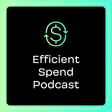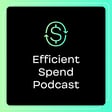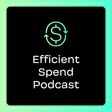
How to Find Incremental Customers in Hard-to-Measure Channels | Simon Mills
SUBSCRIBE TO LEARN FROM PAID MARKETING EXPERTS 🔔
The Efficient Spend Podcast helps start-ups turn media spend into revenue. Learn how the world's top marketers are managing their media mix to drive growth!
In this episode of the Efficient Spend Podcast, Simon Mills, Founder of George St Growth, talks about how to make the most of your marketing budget using affiliate marketing and out-of-home advertising strategies. He also shares tips on how startups can grow their campaigns effectively, balancing brand awareness with direct sales tactics.
About the Host: Paul is a paid marketing leader with 7+ years of experience optimizing marketing spend at venture-backed startups. He's driven over $100 million in revenue through paid media and is passionate about helping startups deploy marketing dollars to drive growth.
About the Guest: Simon Mills is a media mix optimization expert with extensive experience in digital and offline marketing, having successfully scaled growth at multiple B2C and fintech companies. He is passionate about leveraging data-driven strategies to maximize ROI and drive impactful results across various channels.
VISIT OUR WEBSITE: https://www.efficientspend.com/
CONNECT WITH PAUL: https://www.linkedin.com/in/paulkovalski/
CONNECT WITH SIMON: https://www.linkedin.com/in/simonmills3/
EPISODE LINKS:
https://www.perkopolis.com/about?page=1
https://www.nerdwallet.com/security?trk=nw_gf_5.0
https://www.rocked.us/platform
https://www.outbrain.com/blog/
https://www.taboola.com/blog/



